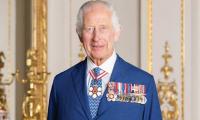We can debate the stratagem behind Modi’s flying visit to little Versailles in Raiwind. But first his method of pioneering a new trend on social media should be noted.
What makes a prime minister bypass the human and material resources placed at his disposal by the state, to break news of great public interest via Twitter? It could very well be an attempt to portray himself as a political maharishi and spread his personality cult far and beyond.
Modi seems to treat Pak-India rapport in a very personal manner. There can be risks in prime ministerial schmoozing that extends to family members and touches celebrations like weddings and birthdays. Imagine, we are back in the days of potentates, ruling over the destiny of 1200 million human beings whose vast majority is still struggling to meet the very basics of Maslow’s pyramid of human needs. It would be better for all of us if the two popularly elected leaders threw some light on how their personal acquaintance is going to impact the lives of the poor in specific terms, not in generalities and clichés.
While we wait to know more about the roadmap to a normal relationship between the two countries, one can only be sceptical about the possible breakthroughs, often anticipated but seldom realised. Well, Mr Modi, you can give us a scoop on Twitter but can you and your counterpart motivate those who will actually be sitting across the table, with heavy dossiers and almost seventy years of baggage of conflict and mistrust?
The immediate result of Modi’s change of stance towards Pakistan over the past few weeks is a palpable lowering of tensions and accusations. Since 9/11, India has persistently used the issue of terrorism as a tool of public diplomacy against Pakistan. Since Musharraf allowed parliamentary democracy with full participation of political parties from 2002, India could not use its usual propaganda handle of an Indian democracy having to deal with a military dictatorship in Pakistan.
The new Indian propaganda was centred around terms like ‘Pakistan, the epicentre of terrorism’. It was fully echoed by camp followers like Karzai & Co in Kabul. Once a popularly elected government took office in Pakistan in 2008, the tragedy in Mumbai was exploited to present Pakistan as a state that backs terrorists. Indian behaviour from Mumbai onwards implied that they still wanted to isolate Pakistan internationally and the most effective manner to do that was to keep harping on terrorism and Mumbai. That way India was off the hook to engage with Pakistan to normalise relations and resolve longstanding disputes.
The Indian media played the game along the same lines. So did many Indians on social media and on the websites of Pakistani newspapers. The biggest democracy had no diversity of opinion. Everybody used the same language about Pakistan. The then president Zardari’s assertion that non-state actors were behind Mumbai cut no ice. His and former prime minister Gilani’s unofficial visits failed to break the logjam as did Nawaz Sharif’s journey to attend Modi’s inauguration.
A lot has been said about the reasons behind Modi’s abrupt change of tactics of which the stop-over in Lahore is the greatest manifestation. As a result of this, the iceberg of mistrust has started to melt. However, people on both sides have become so accustomed to the adversarial mode that they may find it difficult to cope with overfriendly gestures.
Serious business will start in the coming year with the two foreign secretaries meeting in Islamabad. That first encounter should result in a roadmap of further thematic meetings. Both sides should resist the temptation of going for early breakthroughs because that often results in heightening expectations; it also usually ends in setbacks.
Subjects like terrorism and trade are daunting enough, not to speak of a resolution of the Jammu & Kashmir dispute. Even the once ‘low-hanging fruits’ like Siachen and Sir Creek have proved to be intractable. The first goal should, therefore, be to improve atmospherics and desist from portraying the other as the enemy. That would ease tensions and help prepare for eventual breakthroughs.
It has been reported that the Pak Army is on board with the renewed efforts for durable peace with India. Let us remember that the other army has to be equally on board. The Indian army had blocked an earlier formula for disengagement of troops from Siachen.
Armies being on board is only the first step. They should also be prepared to endorse the accords reached through negotiations. It is important that the intelligence networks on both sides are also brought onboard to minimise setbacks to the dialogue process.
The Indian side has, more or less, made their goals in the resumed dialogue known, with Mumbai-related trials and transit trade topping the list. The same cannot be said about Pakistan. A reactive approach is not helpful when the other side is going full speed ahead in articulating their position. Nawaz Sharif has completed half of his five-year term without appointing a foreign minister. Will he give us a surprise by nominating one now that the Pak-India dialogue is being revived?
Meanwhile, non-official circles in Islamabad do not hesitate to express their scepticism about the prospects of success in the resumed dialogue. Former foreign secretary Riaz Khokhar, a reputed hawk, says that not much will come out of the dialogue. He adds that on the most critical issue of Kashmir, India will try to push, as before, a status quo based solution. Room for more backchannel activity on the mother of all issues?
Email: saeed.saeedk@gmail.com
Most recently, US presidential elections demonstrated how AI has amplified partisan split
Few years ago, Pakistan ranked as fourth-largest freelancer market globally, with potential to become number one
Arts Council Karachi celebrated its 70th birth anniversary at inaugural session with big cake
There are over 11 million Pakistanis settled abroad, out of which around six million work in Gulf and Middle East
This year alone, US Treasury would have to roll-over $10 to $14 trillion in maturing short-term debt
Tear gas no longer marks just protest sites; it paints entire cities as battlegrounds but then again, PTI did it first







